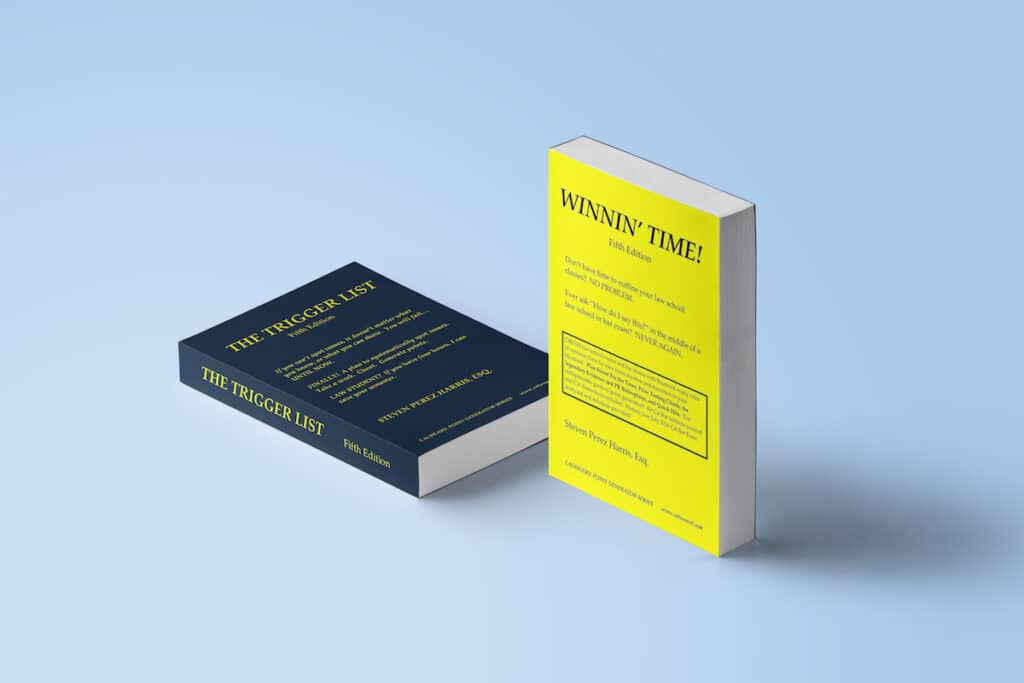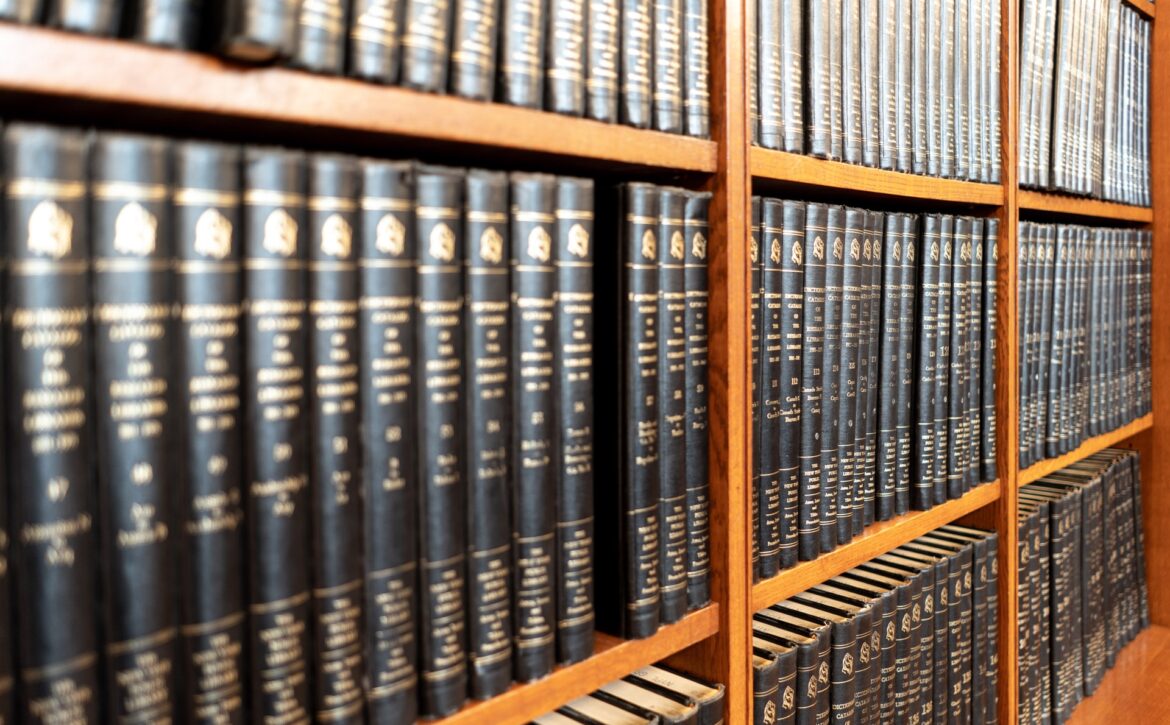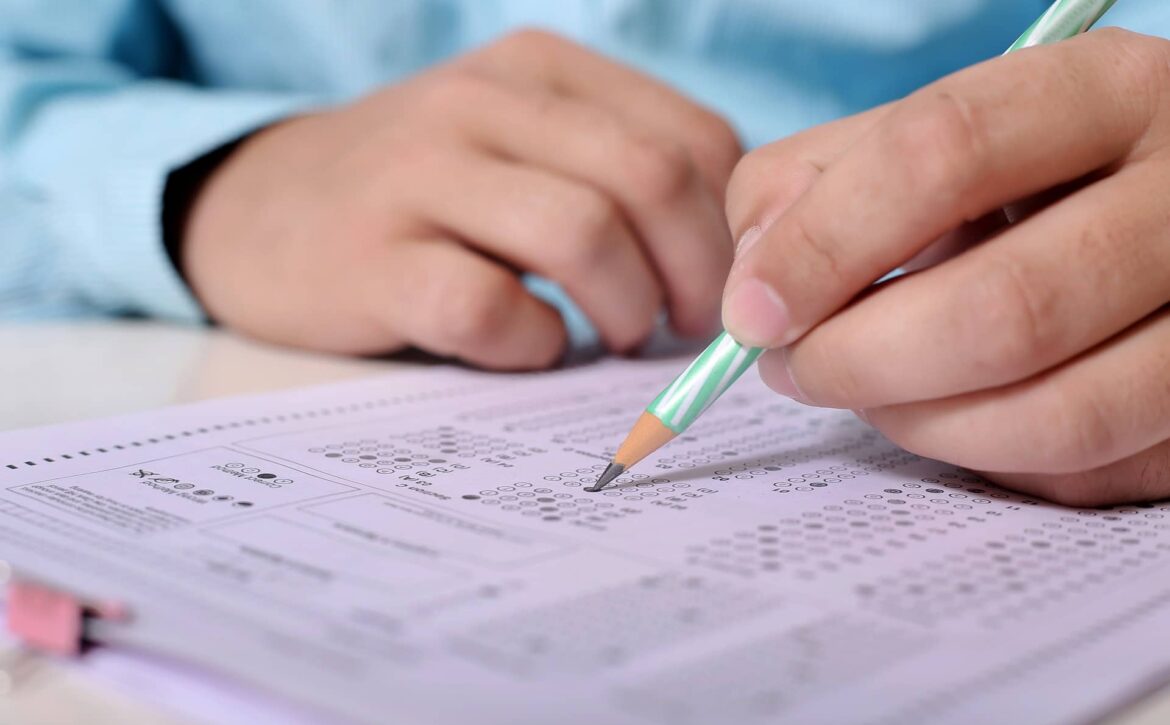Exam schedule
The July 2021 bar exam will be offered online and remotely proctored to all applicants. In-person exam administration will be provided to those for whom online remote proctoring is not available and to those with approved testing accommodations that cannot be effectively provided and securely administered in a remote environment. The exam is scheduled to be administered on Tuesday and Wednesday, July 27 and 28, 2021.
The July bar exam will have 200 Multistate Bar Exam (MBE) questions, with the essays and performance test on day 1 and the MBE on day 2. Applicants approved to take the Attorneys’ Exam will test on day 1 only.
Applicants must use a laptop and must be logged into the system no later than 8:30 a.m. The exam will begin immediately following establishment of the applicant’s identity and delivery of instructions. You must be logged into the system no later than 2:00 p.m. for the afternoon session on day 1, and 1:30 p.m. for the afternoon session on day 2. Every session begins with reestablishment of your identity.
Review the schedule and plan accordingly. Keep in mind that each exam session will begin immediately after you enter the password for that session. You should enter the password when you’re ready to begin, and no later than the schedule allows. You will have 30-minute breaks between each session and one hour for lunch.
All in-person applicants should arrive no later than 7:30 a.m. The exam will begin immediately following the instructions. You should plan to arrive at least 30 minutes early for temperature screening and to locate your assigned room. Arriving late to the test center will not alter the start time of your exam.
Applicants granted extended time may have different schedules, which are communicated to them individually in advance of the exam.
Exam description
The California Bar Exam is comprised of the General Bar Exam and the Attorneys’ Exam. The General Bar Exam consists of three parts: five essay questions, the MBE, and one Performance Test (PT). The parts of the exam may not be taken separately, and California does not accept the transfer of MBE scores from other jurisdictions.
On the first day of the exam, five essay questions and the 90-minute Performance Test is administered. A 90-minute break for lunch will occur between essays 3 and 4.
On the second day, the MBE will be administered in four 50-question sessions, 90 minutes each. There will be a 90-minute break for lunch between Part 2 and Part 3 of the MBE.
Applicants with disabilities who are granted extended time accommodations will have slightly different schedules, which will be communicated to them prior to the exam.
July’s exam will be scaled and graded as described here. The passing score on the exam is 1390.
The Attorneys’ Exam consists of the five essay questions and the PT from the General Bar Exam. An applicant can earn up to 100 raw points on each essay question and up to 200 raw points on the PT. The same methodology as described above will be used to convert the written scores to a 2000-point scale. The score for the Attorneys’ Exam is 100 percent based on the written portion. The passing score is 1390.
If an applicant is absent for any portion of the exam, the applicant will be considered as having not taken the exam and their written answers will not be graded, and if the applicant intends to take a future administration of the exam, they will be subject to the same application filing deadlines applicable to first-time applicants, rather than the deadlines applicable to immediate repeaters.
The Committee of Bar Examiners (CBE) judges the validity of the exam, and at its discretion, may determine that the result of any test, any part of any test, or any individual’s score is not valid. Should the CBE invalidate any part of the test, or if any individual’s test is declared invalid, or for any reason, any part of the test cannot be graded, at its discretion, the CBE may decide to make a pass/fail decision on the basis of the valid portion of the applicant’s test product available to the CBE.
If you are an attorney applicant and have been approved to take the Attorneys’ Exam, you are not permitted to take the MBE. Written notification of an attorney’s decision to take the General Bar Exam instead of the Attorneys’ Exam, or to take the Attorneys’ Exam instead of the General Bar Exam, must be received in the Office of Admissions by the final filing deadline for applications. Requests for changes received after that date will not be processed; applicants must pass the exam selected and approved by the Office of Admissions.
For attorney applicants with disabilities who have been granted accommodations that include an extended day schedule, the number of testing days will be specified in their Testing Accommodations Notice.
Examination administration rules and policies
Failure to follow exam rules while the exam is in session will result in notice to the State Bar of California of a violation of exam rules in accordance with the provisions of Title 4, Division 1, Chapter 6 of the Rules of the State Bar of California (Admissions Rules). Conduct that results in a violation of security or disrupts the administration of the exam, which includes but is not limited to having unauthorized items with you during the exam (such as cell phones, digital watches, and timing devices, notes, etc.), writing or typing after time has been called, attempting to cheat or avoid/override the remote proctoring system, leaving the view of the camera while the exam is in session, or ignoring warnings about minimum system requirements that result in gaps in the audio/video recording will result in notice to the State Bar of a violation of exam rules, or in some cases, can lead to a negative referral to the Moral Character Determination unit.
In addition, applicants who are testing in person are expected to maintain a professional attitude toward other applicants, staff, proctors, and other exam personnel at all times. Behavior that is abusive or disruptive may result in dismissal from the test center and will be reported to the State Bar or the CBE for appropriate action. It is expected that all applicants will demonstrate integrity, honor, and ethical behavior during all exams administered by the State Bar of California.
The remote-proctored exam will be continuously monitored by artificial intelligence and human proctors, and any and all anomalies or suspicious behavior will be flagged accordingly. Flagged video files will be reviewed by the State Bar, and conduct violations determined to be serious will result in strict sanctions. Sanctions may include but are not limited to a zero for the flagged exam session, a zero for the entire exam, and a negative impact on your Moral Character Determination. For less serious conduct and rule violations, the State Bar or the CBE may take whichever action it deems appropriate.
Applicants may not wear hats, caps, hoods, or any other type of headwear during the exam. The CBE, however, will consider petitions filed by applicants seeking exemptions from that policy, which would permit them to wear headwear due to religious beliefs while in a secure exam test center or while testing remotely. Such petitions must be submitted online through the Applicant Portal no later than the final deadline for filing testing accommodations petitions. Upon arrival at an in-person test center, applicants must be prepared to show a letter from the CBE that permits them to wear the headwear in the exam room. The headwear may be subject to inspection. Applicants attempting to enter the test center wearing headwear who do not have a letter from the CBE authorizing them to do so will be issued a Chapter 6 Notice and will be asked to remove the headwear. Letters allowing headwear for applicants testing remotely will be kept on file with the State Bar and compared against the applicant’s uploaded video file to determine whether a violation has occurred.
Only the following items are allowed in the exam areas without prior approval. All items are subject to inspection at the in-person test centers:
- Valid government-issued photo ID
- Eyeglasses (no cases or sunglasses)
- Foam earplugs (cannot be wireless and must not be connected to any mechanism or device)
- Menstrual products
- Inhalers
- Diabetes-related items and equipment (does not include food or drinks)
- Eyedrops in single-use vials
- One back support (without a cover)
- One orthopedic cushion (without a cover)
- One standard-size pillow (without a case)
- One footrest
- Splints, braces, casts, crutches, wheelchair
- Hearing aids
- TENS units
- Disability-related items that have been approved through the testing accommodations petition process
Online applicants will be allowed the following items during the PT session only:
- Nondigital pens
- Nonmechanical pencils (with eraser incorporated; no separate erasers)
- Pen-style highlighters
- Eight pages of physical scratch paper no larger than 8.5” x 11” (both sides must be blank); Applicants will be required to hold up to the camera the front and back of each piece of scratch paper (Failure to do so will result in the issuance of a Chapter 6 Notice of Violation)
The following laptop accessories are allowed:
- Separate keyboard
- Mouse (wired or wireless)
- Laptop riser/stand no higher than 4”
- Solid color mouse pad with no writing on it
Additional instructions for in-person test takers
Applicants who will be testing in person are allowed to have the following items in addition to those listed above:
- The admittance ticket with no writing on it (detach ticket from instructions above prior to arrival at the test center)
- Silent analog watches
- Prescription medications (does not include cough drops)
- Cash (must not have extraneous writing on it)
- Credit/debit cards that might be needed for the lunch breaks
- Keys
- Face masks (with no patterns or extraneous writing on them)
- Protective gloves
- Applicants who are handwriting or have certain testing accommodations may be allowed the following beyond the PT session: Nondigital pens (standard blue or black ink), Nonmechanical pencils (with eraser incorporated; no separate erasers), Pen-style highlighters (must not be used on answers), Nondigital timers and nondigital clocks measuring 4”x 4” or smaller.
Applicants who are handwriting or have certain testing accommodations may be allowed the following beyond the PT session: nondigital pens (standard blue or black ink), nonmechanical pencils (with eraser incorporated; no separate erasers), pen-style highlighters (must not be used on answers), nondigital timers and nondigital clocks measuring 4”x 4” or smaller.
Applicants who will be handwriting their exam answers must bring their own standard blue or black ink ballpoint pens. Applicants must also bring their own pencils for the multiple-choice portion of the exam (several sharpened pencils are recommended). Mechanical pencils are not permitted. Pencil sharpeners and separate erasers will not be allowed into the exam room.
Please note that, whether testing remotely or in person, applicants cannot have wallets, tissues, lip balm, cough drops/throat lozenges, gum, candy, or other food or drinks in the exam room. Water and tissues will be available nearby at the in-person test centers. Applicants testing in-person with an online format because of extenuating circumstances will not have access to these items during testing; only during breaks.
During the in-person MBE sessions, the items listed above are allowed in the exam room, except pens, highlighters, back supports, orthopedic cushions, pillows, bookstands or footrests, and laptops or laptop accessories. If you need any of these items due to a disability, you must request them through the timely filing of a Testing Accommodations Petition.
If unauthorized items are brought into the exam room, either intentionally or inadvertently, they will be confiscated or noted, and the applicant will receive a Chapter 6 Notice and possibly additional sanctions imposed by the State Bar or the CBE. In accordance with the CBE’s policies, applicants will receive a score of zero for any session during which they are found to have brought an unauthorized electronic device, such as a cell phone, digital watch or timer, or activity tracker device (e.g., Fitbit) into the exam room, as well as any additional sanctions the State Bar or the CBE, may impose.
General instructions: Remote-proctored administration
The system will prompt you to establish your identity at the beginning of each session (at the start and after each break). However, if the system cannot confirm your identity, you will be able to proceed with the exam, but your video will be reviewed later.
The following conduct will be prohibited:
- Leaving the view of the webcam outside of scheduled breaks.
- Any attempt to bypass or avoid the remote proctoring mechanisms and protocols, or to obtain or receive assistance on the exam.
- Individuals (other than the applicant) entering the exam room.
- Possession of cell phones or other electronic devices, including a tablet or additional computers in the exam room, or connected remotely to any other devices or equipment in the exam room.
- Possession of notes, study aids, or other papers or exam resources in the exam room, including scratch paper (digital scratch paper will be provided). An exception is made for scratch paper only for the PT session and only under the specified terms and conditions.
- Possession of any digital timers, watches, or clocks in the exam room (the exam software has a built-in timer that allows applicants to set timed reminders).
- Possession of books of any kind in the exam room within view or access during the exam session.
- Possession of food or beverages in the exam room, including but not limited to coffee and water (unless you have been granted a testing accommodation that allows for these items).
- Smoking in the exam room.
- Possession of any item(s) other than the allowed items listed in the Admittance Bulletin in the exam room (unless you have been granted a testing accommodation that allows for these items).
- Possession of any radios, stereos, or other devices/equipment (including smart home devices such as Google Home or Alexa) that can make audible sounds in the exam room. Any such items must be turned off at all times during the exam and scheduled breaks.
If items other than those allowed are detected during the exam, you will be flagged by the system and a corresponding sanction may be issued after review by State Bar staff.
You are not allowed to make notes from memory prior to the start of the exam session. Laptop users may not access any notes or other documents at any point during the exam. Digital scratch paper will be available in the Examplify program.
The exam is electronically timed, and applicants can set a timer in the system. Applicants are encouraged to keep track of their own time.
Please note that extra time is not granted to any individual applicant for any reason. If you attempt to continue completing the exam after the session has ended, you will receive a Chapter 6 Notice.
You should use the restroom before the start of each exam session. You will not be permitted to use the restroom or leave the view of the web camera during the exam session.
If you leave the exam area during the exam session, you will be issued a Chapter 6 Notice, and you will receive a score of zero for the entire exam session.
No smoking: In-person and remote exam instructions
Smoking is not allowed during any exam session, both in-person and remote. Smoking is prohibited at test centers located in buildings that do not allow smoking in accordance with city ordinance. Regardless of whether smoking is prohibited, any applicant who exits the secure exam area in order to smoke while the exam is in progress will not be allowed to re-enter to complete the examination.
Laptop computer users
After you have been notified that your admittance ticket is available, you are eligible to have your laptop registered for use during the exam. You must download and install the required security software onto your laptop (Examplify with ExamID and Exam Monitor), and you must complete the registration process by July 16, 2021, with the completion of both mock exams. Complete the following steps to make sure your laptop is ready for exam day:
- Download the required security software (Examplify) onto your computer and register with ExamSoft.
- Take the two required mock exams and upload the answer files by July 16, 2021.
- Download the 10 bar exam answer files between July 20 and July 23, 2021.
Confirmation: After you have downloaded the 10 exam files, you will be advised via email by ExamSoft that you have done so. Those 10 confirmation emails are the only certification that your laptop is ready for the exam. You may also check your status and view your download/upload history online by launching Examplify from your laptop and confirming you have the 10 downloads. Log in using the Exam Takers box, click the Exam History button to review your record, and confirm that you have downloaded the exam and mock exam files, and have uploaded the mock exam answer files. You should have a total of 10 answer files for the July 2021 California Bar Exam.
It is the responsibility of applicants using laptops to timely upload their exam files containing their answers to the five essay questions, one Performance Test, and four parts of the multiple-choice exam. Applicants must also timely upload their video files for each exam session, for a total of 10 video files. Applicants who fail to upload their answer and video files by the published deadline will have a deduction of 10 scaled points taken from their scaled score. Applicants who fail to upload their answer and video files within two weeks of the published deadline will be given a grade of zero for each answer that is not received by the State Bar Office of Admissions by the published deadline. Applicants are expected to comply with the published deadlines; there are no waivers of the deadlines or the sanctions that will be imposed as a result of applicants’ failure to upload their exam and video files.
General instructions: In-person administration
- Your admittance ticket contains your applicant number, your file number, and your NCBE number. Do not write anything on the ticket. You will be required to show your ticket to the proctor when you enter the test center. You must keep it in your possession throughout the exam.
- If items other than those allowed are brought to the test center, you will be required to leave them at your own risk outside of the exam area. The State Bar, CBE, Office of Admissions staff, and proctors assume no responsibility for the safekeeping of items that you bring to the test center. You are not permitted access to those items while the exam is in session.
- You should bring any small permitted personal items (e.g., prescription medication, foam earplugs, pens, etc.) into the exam area in a small, clear plastic bag. Larger items, such as pillows, do not need to fit into the clear plastic bag that holds your smaller items.
- Proctors will provide you with seating information upon your arrival at the test center.
- Upon arrival, you will be provided with a badge that will be your identification credential during exam administration, which you may be required to show at any time. The badge must be fastened so it can be easily seen by the proctors. You will be told to relocate the badge if it is not placed appropriately. The badge must be left at your seat during the lunch break.
- At some time during exam administration, you may be required to provide your fingerprints. If you refuse to provide the required fingerprints, you will be issued a Chapter 6 Notice.
- During the exam, you will be required to show a valid government-issued photo ID (e.g., Driver’s License, California Identification Card, or Passport) for the purpose of identity verification. You must carry this photo ID card at all times during the exam.
- Those applicants that are handwriting their answers will be instructed to write their applicant number, name, and signature in the upper right-hand section of each of their answer book covers at the beginning of each written exam session (essay and PT). Do not write notes, outlines, answers, time schedules, or make any marks on the inside or outside of your answer book covers. Prior to grading, your personal information will be removed after a code number has been assigned. Thereafter, answers are identified by a code number only; nothing about an individual applicant is known to the graders.
- You are not allowed to make notes from memory prior to the start of the exam session. If you are using your laptop, you may not access any notes or other documents on your computer after you have entered the secure examining area. Applicants using laptops will have access to virtual scratch paper. Physical scratch paper is not permitted during any of the Essay Question sessions or during the MBE sessions of the exam. An exception is made for physical scratch paper only for the PT session of the exam and only under the specified terms and conditions. Some applicants with documented disabilities requiring them to have physical scratch paper will be accommodated. Nothing written on scratch paper will be graded. You must not make notes or write anything on your admittance ticket. If writing is found on your admittance ticket, the ticket will be confiscated, and you will be issued a Chapter 6 Notice.
- If you are handwriting your answers, there is a separate answer book for each written question, and you must be certain that the answer to Question No. 1 is written in the book for Question No. 1, etc. Answers written in a wrong answer book or typed in the wrong answer window while using Examplify, or more than one answer typed in the text box screen while using Examplify, require special handling and could delay the grading of an applicant’s answer.
- If you handwrite your exam answers and need additional lined paper to write your answers during the exam, raise your hand and a proctor will provide you with what you need.
- If you are handwriting, you should do so as legibly as possible. A ballpoint pen with standard blue or black ink must be used to write your answers. Answers to the essay and PT questions written in pencil are not acceptable. Only nonmechanical pencils may be used for the MBE portion of the exam. Neither highlighters nor white-out may be used on your answers to the essay and PT questions.
- If you are testing with paper MBE exam materials, all answers to the MBE portion of the exam must be marked on the Scantron answer sheets provided. If you have circled or otherwise marked your answers in the question booklet, extra time to transfer answers to the answer sheet will not be granted. Only answers properly marked on the answer sheets will be scored.
- If you are testing with paper exam materials, exam questions, and used scratch paper may not be taken out of the exam room. After completing each session of the exam, the exam questions and used scratch paper must be placed in the envelope designated for that purpose.
- If you handwrite your exam answers, it is your responsibility to turn in your written exam answers to the proctors. If you leave the test center with your answers, the answers will not be graded.
- The exam is electronically timed, and you are encouraged to keep track of your own time since wall clocks are not provided. Laptop users will have the ability to set two timers while in the exam session.
- Timing devices (i.e., watches and clocks) that are allowed to be brought into the exam test centers are to be used solely for the determination of the passage of time. They cannot have a digital display, must be absolutely silent, and cannot be larger than 4″x4″. Timing devices that are digital, programmable, and/or make noise are not permitted. If found, they will be confiscated, and the applicant will receive a Chapter 6 Notice.
- Writing and typing of answers must be completed when time is called. Please note that extra time is not granted to any individual applicant for any reason. If you attempt to write anything after time has been called, you will receive a Chapter 6 Notice.
- Restrooms and water will be available at each test center. Applicable to applicants who are NOT required to use the online remote-proctored version of the exam: You should use the facilities before taking your seat so you have time to go over the instructions prior to the start of each session. Extra time to use the restroom will not be granted. You will not be permitted to use the restroom or leave your seat during the last several minutes of the exam session (5 to 15 minutes depending on the session). After time is called, you will not be permitted to use the restroom or leave your seat until all materials are collected and inventoried. If you fail to remain seated after being advised to do so, or while the exam materials are being collected and inventoried, you will receive a Chapter 6 Notice. Applicable to applicants who are required to use the online remote-proctored version of the exam: You should use the restroom before taking your seat at the start of the exam session. If you leave the view of the webcam at any time while the exam is in session, you will be flagged by the AI proctor and you will receive a Chapter 6 Notice, as well as a score of zero for the exam session.
- If you leave the secure exam area during the exam session, you will not be permitted to return for the purpose of completing your exam answers. For applicants who are required to use the online remote proctored version of the exam, any answer typed thereafter will not be graded if you leave the secure exam area during the exam session.
- The proctors’ chief function is to proctor the exam; however, if asked, the proctors will attempt to assist with any problems that may arise.
- If there is an emergency of any kind, you should remain seated and wait for instructions on how to proceed.
In-person test center environment
While every effort will be made to keep the environment of the test center comfortable and quiet, there are times when events, conditions, or actions of third parties occur that are beyond the control of the State Bar or the CBE. For instance, the temperature of the test center may fluctuate due to the weather or the test center’s cooling/heating equipment; applicants should be prepared for either warm or cold temperatures. Efforts will be made to keep the test center quiet, but there may be forces outside the control of the State Bar or the CBE that prevent such an environment from being guaranteed. You should come prepared to accommodate noises, such as those made by other applicants taking the exam, proctors carrying out their duties, people entering/exiting the exam room, equipment inside or outside the test center that may make sounds while operating, other meetings or conventions in the same facility, etc. Earplugs of the type specified earlier are strongly recommended.
Exam attendance policy
If you do not attend or are unable to complete a required, scheduled exam session, you will be considered a partial exam taker and your exam will not be graded. For instance, if you are taking the exam in person, if you are absent for the Tuesday morning session, you will not be allowed to take any remaining sessions of the exam. If you are absent for any portion of the exam, you will be considered as having not taken the exam and your written answers will not be graded. If you intend to take a future administration of the exam, you will be subject to the same application filing deadlines applicable to first-time applicants rather than the deadlines applicable to immediate repeaters, if any. Applicants must make a good faith attempt to complete each session of the exam for which they are present. Failure to do so may lead to receipt of a Chapter 6 Notice and being prohibited from attending any remaining exam sessions.
Late login to the system
Applicants testing in-person and arriving at the test center after one hour of testing time has elapsed will not be permitted to enter the test center for any portion of the exam.
Applicants testing remotely and logging in after 10 minutes of testing time have elapsed will not be permitted to begin the exam session that has started and will be locked out of the question in progress. Any answers to questions in subsequent exam sessions will not be graded or scored.
Address change
Applicants are encouraged to notify the Office of Admissions of a change of address as soon as possible. Applicants are able to update their admissions file with the new address by accessing their account through the Applicant Portal.
Moral Character
The Admissions Rules require a positive moral character determination before the CBE may recommend that an applicant be admitted to practice law. The process is initiated by filing an Application for Determination of Moral Character. The processing of these applications generally takes a minimum of 180 days and sometimes longer to complete. If you have not already filed a moral character application, you should do so now to avoid delays in your admission to practice law if you are successful on the California Bar Exam. The application must be filed online through your Applicant Portal.
Admittance ticket
Applicants will receive an email alerting them when admittance tickets are ready to be printed. The admittance ticket can be located in the exam case record through the Applicant Portal. Admittance tickets only need to be printed for applicants testing in person
Further communication
For particular questions regarding your status or the other requirements for admission, you should contact the State Bar’s Office of Admissions by sending an email directly from your Applicant Portal. If you need to contact the office by phone, please use one of the following numbers:
Los Angeles
845 South Figueroa Street
Los Angeles, CA 90017
213-765-1500
San Francisco
180 Howard Street
San Francisco, CA 94105
415-538-2300
California Bar Exam results
Results from the July 2021 administration of the California Bar Exam will be available to applicants through their Applicant Portal on November 12, 2021, at 6:00 p.m. Communications regarding exam results will be sent to the applicant’s contact information on file. Please note that applicants will not be able to change their contact information the week before the exam results are released.
You will be able to determine whether your name appears on the pass list through the State Bar website at 6:00 p.m. (Pacific Time) on November 12, 2021. You will need your file number and applicant number, which are listed on the admittance tickets and ID badges, to access the pass list.






 Lectures Are Too Long
Lectures Are Too Long 2. Read My Books
2. Read My Books
 Worse yet, you feel a sense of shame. You don’t talk to your spouse or significant other about it. You don’t tell your parents, friends, or co-workers.
Worse yet, you feel a sense of shame. You don’t talk to your spouse or significant other about it. You don’t tell your parents, friends, or co-workers. Confront It
Confront It




 How My Program Works
How My Program Works


